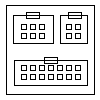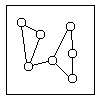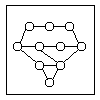Inscrivez-vous ou connectez-vous pour rejoindre votre communauté professionnelle.

Thank you for the invite. This is an interesting question too.
The Manager plans, Leads, organises and controls the daily routines in an organisaton and hence has to have the required tools on hand to manage smooth operations within the company and meet the targets for each week or fortnight or a month.
The Seven Management and Planning tools are:
Seven Management and Planning Tools are a set of tools and techniques used to help effectively plan and manage various types of business operations. These tools are intended to guide you in the planning, analysis, and decision making processes.
These tools were developed independently by different people for diverse purposes. However, they were assembled as a set of methods in order to achieve efficiencies in the planning and management of operations.
The seven management and planning tools are collectively used by organizations to make better decisions and implement new solutions effectively. When used as individually, these tools provide a systematic and organized way of assessing ideas and making decisions. However, when used in combination with each other, they provide an extremely effective way to systematically solve complex issues an organization may face.
Affinity Diagram
An Affinity Diagram is a tool used for organizing a large amounts of disorganized information into groups based on their natural relationships and affinity (similarity of characteristics). It is often used for solving problems with issues that seem to be very complex and difficult to manage.
An Affinity Diagram is a type of brainstorming technique that allows you to generate, organize, and consolidate information concerning complex processes, issues, or problems.
Tree Diagram
A Tree Diagram (also referred to as a systematic diagram) is a systematic method to outline all the details needed to complete a given objective or process. It is used to break down broad categories or complex processes into minute details allowing you to examine the finer details.
The Tree Diagram is an orderly structure similar to an organization chart or family tree diagram. It helps in understanding a process by graphically breaking down complex processes to smaller levels of detail.
This technique encourages you to direct your thinking from generalities to specifics.
Interrelationship Diagram
An Interrelationship Diagram (also referred to as a relations diagram) identifies and displays all the interrelated cause-and-effect relationships among different concepts or ideas. Basically, it establishes links between ideas or concepts, and shows that they can be logically linked with more than one other idea or concept at a time.
The process of creating an Interrelationship Diagram allows you to systematically identify and analyze the cause-and-effect relationships that exist among all critical issues. This process helps you understand the natural links between different aspects of a complex issue so you can better develop an effective solution.
This technique encourages you to think in multiple directions (lateral thinking) rather than just thinking linearly.
A Matrix Diagram is a tool that shows the connection or correlation between ideas or variables in a table format. It enables you to analyze relatively complex issues by revealing interactions and dependencies between different elements or variables.
The Matrix Diagram graphically establishes relationship between two or more sets of items in such a way as to provide logical connecting points between each item. The diagram displays the strength of relationships using a grid of rows and columns. A relationship is indicated at each intersection of rows and columns as either present or absent. Thus, allowing you to identify the presence and strengths of relationships between two or more items.
Prioritization Matrix is a tool that sorts and ranks various options into an order of importance using weighted criteria. This technique helps identify which problems are the most important to work on solving first.
A Prioritization Matrix graphically displays options and criteria in row and column format. Weights are assigned to each criteria. The matrix allows you to identify an item’s relative importance by deriving a numerical value for its priority. This allows you to select and prioritize some options over others.
A Process Decision Program Chart (PDPC) is a tool for identifying and documenting the steps required to complete a process. It is intended to help you prepare contingency plans by mapping out every conceivable event that can occur when moving from a problem to possible solutions.
This technique allows you to systematically identify what might go wrong with a plan. Therefore, you can create appropriate contingency plans to limit risks.
Activity Network Diagram (also referred to as an Arrow Diagram) is a tool used to map activities and tasks for a project in sequential order. Basically, it graphically depicts a project timeline.
This tool displays interdependent relationships between activities, tasks, and groups as they all impact a project. Boxes and arrows are used to depict these activities and the links between them as well as chart the sequential order of the entire process.
Managers use these tools to forecast and plan the daily routine for smooth working of the organisation. They summarise results for the organisation. Each tool is used in a way to help the process and make things work well within the company targets.

Affinity Diagram
Tree diagram
Interrelationship Diagram
Prioritization Marices
Matrix Diagram
Activity network Diagram
Procees decission program chart

I use business tools and I apply them to EHS. Tools such as SWOT (strengths, weaknesses, opportunities and threats) analysis and gap analysis are very effective.
· Maintains staff by recruiting, selecting, orienting, and training employees; maintaining a safe, secure, and legal work environment; developing personal growth opportunities.
· Accomplishes staff results by communicating job expectations; planning, monitoring, and appraising job results; coaching, counseling, and disciplining employees; developing, coordinating, and enforcing systems, policies, procedures, and productivity standards.
· Establishes strategic goals by gathering pertinent business, financial, service, and operations information; identifying and evaluating trends and options; choosing a course of action; defining objectives; evaluating outcomes.

As manager, if I say that one single tool is sufficeint is wrong. Tools come and go. What is important in IT management are process such as Time Management, Human Capital Management, Project management and Innovations adaption. Any tool that helps in the above process will be helpful.

People Management,Resource Allocation and Completion of the Projects on Time.Also planning is an important aspect for a manager

manager plans leads organises and controls the daily routines in an organisaton ...

TO BE A GOOD LEADER AND INFLUENCE TO THE STAFF.
BE RESPONSILBE / STRICTLY DO RESPONSIBELITIES.
TO DO THE BEST FOR THE COMPANY.
EXPAND THE COMPANY/ SKILLS/ KNOWLEDGE


Affinity diagrams are a special kind of brainstorming tool that organize large amounts of disorganized data and information into groupings based on natural relationships.
It was created in the 1960s by the Japanese anthropologist Jiro Kawakita. It is also known as KJ diagram, after Jiro Kawakita. An Affinity Diagram is used when:
1) You are confronted with many facts or ideas in apparent chaos.
2) Issues seem too large and complex to grasp.

This tool displays all the interrelated cause-and-effect relationships and factors involved in a complex problem and describes desired outcomes. The process of creating an interrelationship diagram helps a group analyze the natural links between different aspects of a complex situation.

This tool is used to break down broad categories into finer and finer levels of detail. It can map levels of details of tasks that are required to accomplish a goal or solution or task. Developing a tree diagram directs concentration from generalities to specifics.

This tool is used to prioritize items and describe them in terms of weighted criteria. It uses a combination of tree and matrix diagramming techniques to do a pair-wise evaluation of items and to narrow down options to the most desired or most effective. Popular applications for the Prioritization Matrix include return on investment (ROI) or Cost–benefit analysis (investment vs. return), time management matrix (urgency vs. importance), etc.

This tool shows the relationship between two or more sets of elements. At each intersection a relationship is either absent or present. It then gives information about the relationship, such as its strength, the roles played by various individuals or measurements. The matrix diagram enables you to analyze relatively complex situations by exposing interactions and dependencies between things. Six differently shaped matrices are possible: L, T, Y, X, C, R and roof-shaped, depending on how many groups must be compared.

A useful way of planning is to break down tasks into a hierarchy, using a tree diagram. The PDPC extends the tree diagram a couple of levels to identify risks and countermeasures for the bottom level tasks. Different shaped boxes are used to highlight risks and identify possible countermeasures (often shown as 'clouds' to indicate their uncertain nature). The PDPC is similar to the Failure Modes and Effects Analysis (FMEA) in that both identify risks, consequences of failure, and contingency actions; the FMEA also rates relative risk levels for each potential failure point.

This tool is used to plan the appropriate sequence or schedule for a set of tasks and related subtasks. It is used when subtasks must occur in parallel. The diagram helps in determining the critical path (longest sequence of tasks). The Purpose is to help people sequentially define, organize, and manage a complex set of activities.

The Manager plans, Leads, organises and controls the daily routines in an organisaton and hence has to have the required tools on hand to manage smooth operations within the company and meet the targets for each week or fortnight or a month.
The Seven Management and Planning tools are:
Seven Management and Planning Tools are a set of tools and techniques used to help effectively plan and manage various types of business operations. These tools are intended to guide you in the planning, analysis, and decision making processes.
These tools were developed independently by different people for diverse purposes. However, they were assembled as a set of methods in order to achieve efficiencies in the planning and management of operations.
The seven management and planning tools are collectively used by organizations to make better decisions and implement new solutions effectively. When used as individually, these tools provide a systematic and organized way of assessing ideas and making decisions. However, when used in combination with each other, they provide an extremely effective way to systematically solve complex issues an organization may face.

Management schedules performance reviews sales reports





Avez-vous besoin d'aide pour créer un CV ayant les mots-clés recherchés par les employeurs?